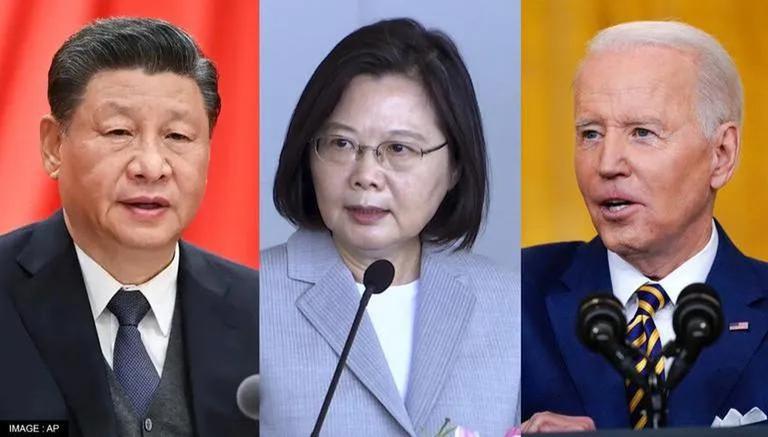Following US President Joe Biden’s remark that Washington will “intervene militarily” if China invaded Taiwan and China retaliating to the remark by warning the US to not meddle in its internal matters, tensions seem to have escalated between the three nations. This comes following the fear of the Chinese invasion of Taiwan amid the Russia Ukraine conflict and the growing fight for power between the US and China.
The US has over the years voiced its support for Taiwan and its independence which has on several occasions raised tensions between Washington and Beijing. While Beijing continues to decry US’ backing of Taiwan and undermine ‘One China’, the US does indeed play a significant role between Taiwan and China.
China-Taiwan history
After the fall of Imperial China in the early years 20th century, Nationalist forces led by Kuomintang (KMT) or the Chinese Nationalist Party ruled mainland China which was called as Republic of China (ROC). The believers in democracy, KMT faced a rift with the Communist Party of China (CCP) during the period of the Chinese Civil war. Taiwan at that time was a colony of Imperial Japan which was later handed over to the Chiang Kai-Shek’s ROC at the end of World War II. However, Taiwan again got separated from China when the CCP led by Mao Zedong defeated ROC, forcing nationalists to move to the island of Taiwan. Later CCP established the People’s Republic of China (PRC) in Beijing whereas KMT’s Chiang Kai-Shek relocated ROC to Taipei with a dream of retaking the mainland. CCP Chairman Mao Zedong on other the hand considered Taiwan the last piece to a united “new China” a “problem” that needed to be solved sooner or later.
China sees Taiwan as its part and recently warned the US over Biden’s remark, stating, “Our stern warning to the US: There is but one China in the world, Taiwan is part of China’s territory and the government of the People’s Republic of China is the sole legal government representing the whole of China. This is a consensus of the international community and a commitment made by the US to China. The one-China principle is unshakable, China’s sovereignty and territorial integrity cannot be violated and the red line of avoiding creating “two Chinas” and “one China, one Taiwan” must not be crossed.”
Role of US
During the Chinese civil war, the US gave support to the nationalists whereas communists got backing from the Soviet Union. It is pertinent to mention that during WW II, ROC and the US were in allied forces against Japan and after Japan’s defeat, Taiwan was handed to ROC. Even after ROC moved to Taiwan in 1949, the US continued to support it economically while shunning PRC. Washington provided ROC with financial grants based on the Foreign Assistance Act, Mutual Security Act and Act for International Development enacted by the US Congress.
“That the provisional capital of the Republic of China has been at Taipei, Taiwan (Formosa) since December 1949; that the Government of the Republic of China exercises authority over the island; that the sovereignty of Formosa has not been transferred to China; and that Formosa is not a part of China as a country, at least not as yet, and not until and unless appropriate treaties are hereafter entered into. Formosa may be said to be a territory or an area occupied and administered by the Government of the Republic of China but is not officially recognized as being a part of the Republic of China,” official stance of the US according to a statement from the State Department in 1959.
Shift in US policies
The Truman administration even established a military presence in ROC and provided economical aid to Taiwan until 1979 when the country changed its policy. It is significant to mention that the US never recognized PRC. However, during the cold war, at the time of the breaking of political ties between the Soviets and China, the US strategically shifted its diplomatic ties from ROC to PRC which culminated in the US recognising PRC in 1979. The US Embassy in Taipei was shifted to Beijing and the Taiwanese Embassy in the US was closed. Following the termination of diplomatic relations, the US terminated its Mutual Defense Treaty with Taiwan in 1980.
Under China’s “One Nation” policy, Washington recognises the PRC as the sole and legitimate government of China, also acknowledging Beijing’s position that Taiwan is part of China, but has never accepted the CCP’s claim of sovereignty over the island. Meanwhile, under the rules of the Taiwan Relations Act, the US still maintains close unofficial links with Taiwan, fostering commercial, cultural, and other interactions through the American Institute in Taiwan (AIT), the de facto US embassy in Taipei.
Earlier, even though when the US supplied Taiwan with military weaponry, it remained deliberately vague on whether it would defend the island in case of a Chinese invasion. But Joe Biden’s direct remark about intervening militarily is seen as a shift from the ambiguous policy over Taiwan. Notably, in a 2020 deal of $2.37 billion between the US-Taiwan, the US State Department approved the potential sale to Taiwan of 400 anti-ship cruise missiles including associated radars, road-mobile launchers, and technical support.
Notably, earlier the Taiwanese Public Opinion Foundation conducted a poll showing that 53.8 per cent of respondents in Taiwan somewhat or completely doubt that Washington would come directly to Taiwan’s defence, up from 28.5 per cent last October.
It is significant to mention that amid the Russia Ukraine conflict, the fear of a Chinese invasion of Taiwan has increased, making the US to openly show support to the ROC government in Taiwan.
